Water Crisis in the United States, Part 1: Navajo Nation
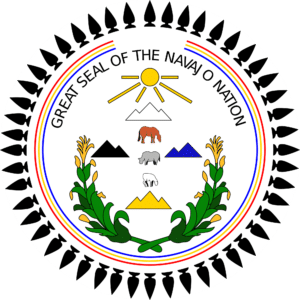 Water poverty has long been considered a global crisis, with over 783 million people worldwide — that’s one in nine people — lacking access to a safe, clean water supply. Over half of the world’s hospital beds are filled with people afflicted with water-related illness, and over 80% of illnesses in sub-Saharan Africa are directly attributable to poor water and sanitation conditions. There are a plethora of charities dedicated to solving the global water crisis, including Tata & Howard’s and AWWA’s charity of choice Water For People. However, there are also water crises taking place right here in the United States. For the month of July, we will be delving into water crises in the United States — and how we can work together to solve them.
Water poverty has long been considered a global crisis, with over 783 million people worldwide — that’s one in nine people — lacking access to a safe, clean water supply. Over half of the world’s hospital beds are filled with people afflicted with water-related illness, and over 80% of illnesses in sub-Saharan Africa are directly attributable to poor water and sanitation conditions. There are a plethora of charities dedicated to solving the global water crisis, including Tata & Howard’s and AWWA’s charity of choice Water For People. However, there are also water crises taking place right here in the United States. For the month of July, we will be delving into water crises in the United States — and how we can work together to solve them.
Navajo Nation
Last fall, CBS Sunday Morning News ran a cover story titled The Water Lady: A Savior Among the Navajo. The piece showcased Darlene Arviso, a Saint Bonaventure Indian Mission employee who delivers water to the people of Navajo Nation. Prior to that, the American people were largely unaware of the water crisis afflicting a full 40% of the 173,000 residents of Navajo Nation.
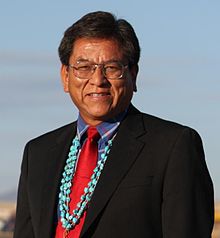
Navajo Nation, though located within the borders of the United States, is a soverign nation with its own president, and does not fall under the jurisdiction of the United States government. Therefore, it also does not fall under the jurisdiction of the Safe Drinking Water Act, which regulates all 155,000 public water supplies of the United States and ensures that our drinking water is safe and clean. Water poverty affects all aspects of life, including not only health and longevity, but also livelihood and education. Unfortunately, the people of Navajo Nation are no exception.
Many of the residents of Navajo Nation must travel many miles to gather water, the most fortunate of whom typically travel by car. However, a large percentage of these residents live well below the poverty level and can ill afford the cost of gasoline required to travel to gather water. Others must walk several miles — no different from their sub-Saharan counterparts. To make matters worse, the water they gather is often from livestock troughs or unregulated wells, frequently fouled by bacteria and other contaminants.
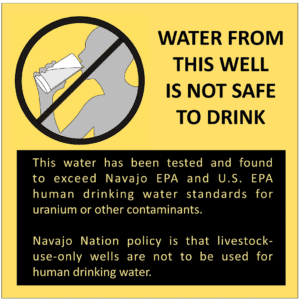
Adding insult to injury, much of the water in Navajo Nation is contaminated with uranium and arsenic due to the prevalence of mining that took place in the area during the nuclear arms race. Uranium and radioactive particles have been found in much of the water supply in Navajo Nation, and the rest has been contaminated by coal mining and coal-fired power plants. At this point, basically all of the water of Navajo Nation is contaminated in some way, which has affected the health of the citizens there. Nearly half of the residents have been touched by kidney ailments or cancer. Since the Navajo people now understand that the water in their land is poisonous, they are forced to travel even farther to find safe water. Some of the residents save up their money for gasoline and make the four-hour trek to Flagstaff, Arizona to buy bottled water when it is on sale.
Solving the Navajo Nation Water Crisis
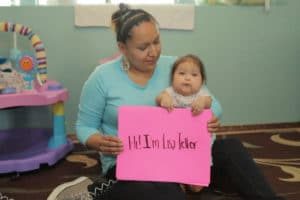
Fortunately, the Navajo water crisis is finally receiving the attention it deserves. Navajo Water Project, a subsidiary of DIGDEEP, is the sole water charity dedicated to the Navajo water crisis in the United States, and has a mission in which Tata & Howard firmly believes. Working with the Saint Bonaventure Indian Mission and subsisting on private donations, Navajo Water Project digs wells, installs water storage tanks, and brings in-home plumbing to those suffering from water poverty in Navajo Nation. Most recently, the Navajo Water Project issued a plea for Baby Lisa, a Navajo child born with Microvillus Inclusion Disease. Her illness requires her to have a feeding tube, for which she needs clean water. Without clean water, she could become seriously ill or even die, so Baby Lisa was living in a medical facility over three hours from her family home. The Navajo Water Project petitioned individuals and businesses for $50,000 to bring clean water to Baby Lisa’s home, and this past spring, they surpassed their goal. The Project is now in the process of installing plumbing in the family home.
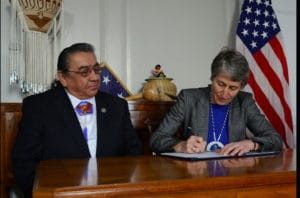
In addition to the Navajo Water Project, the Navajo have entered into agreements with the United States government. Since 1978, native Americans have entered into deals with the U.S. Department of the Interior in which they procure funding for their nation’s water supply in exchange for relinquishing some of their water claims to the federal government, states, and private investors. Additional deals are currently underway, including one in Utah that passed in January of this year. The deal secured millions in funding to build water infrastructure such as distribution systems and treatment facilities on Navajo land. And while many Navajo see these deals as the only way to improve their quality of life and support economic growth, others worry that by relinquishing their water rights they are essentially stealing from future Navajo generations who, if climate change progresses as predicted, may find their water supply has run dry.
In Conclusion
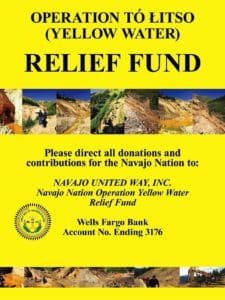 The answer to solving the water crisis of Navajo Nation is not simple. Bringing safe, clean water to the people of Navajo Nation will require both public and private investment. It will also require fair legislation that allows the Navajo to keep rights to water on their land while requiring the federal government to fund the cleanup of the waters that they contaminated. The nation has been in an uproar over the water crisis in Flint, Michigan, in which hundreds of children suffered from lead poisoning from their water supply. However, we should also be outraged at the decades of water poverty and contamination that the people of Navajo Nation have endured. The time has come to address the water crisis in Navajo Nation and to ensure that ALL people living on U.S. soil are afforded the most basic human right to water.
The answer to solving the water crisis of Navajo Nation is not simple. Bringing safe, clean water to the people of Navajo Nation will require both public and private investment. It will also require fair legislation that allows the Navajo to keep rights to water on their land while requiring the federal government to fund the cleanup of the waters that they contaminated. The nation has been in an uproar over the water crisis in Flint, Michigan, in which hundreds of children suffered from lead poisoning from their water supply. However, we should also be outraged at the decades of water poverty and contamination that the people of Navajo Nation have endured. The time has come to address the water crisis in Navajo Nation and to ensure that ALL people living on U.S. soil are afforded the most basic human right to water.
